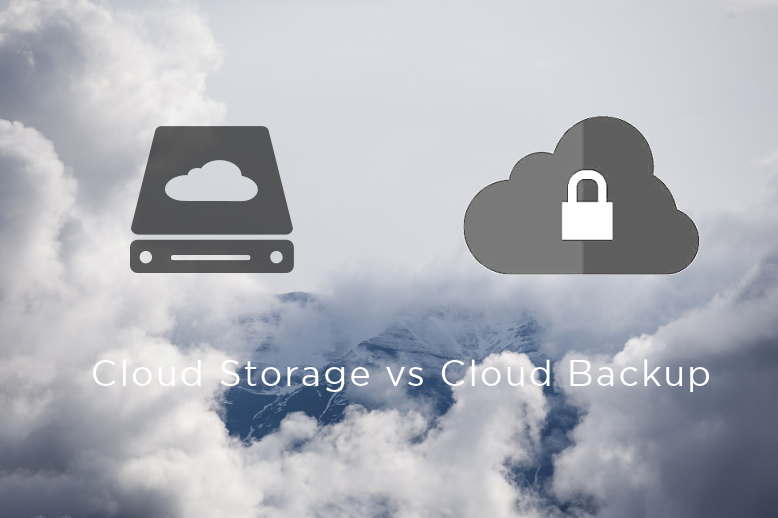The concept of cloud space is still relatively unclear and confusion still exists about what exactly the “cloud” is and how different services interact with it. Adding to this confusion, cloud storage services are often the backend for backup and sync services as well as stand-alone services. In an attempt to settle the confusion, we have defined cloud storage and cloud backup below in the context of a traditional computer set-up with apps and data.
Cloud storage
In plain terms, cloud storage is similar to services such as Microsoft OneDrive, Dropbox and Google Drive which are storage locations that you can map on your hard drive. With cloud storage you are able to store and share the contents of your cloud storage with other users. Cloud storage is an especially appealing option since you can access files and work anywhere, anytime, and on any device. When using cloud-based services such as Microsoft OneDrive, Dropbox and Google Drive, users often assume that these cloud storage services simultaneously serve as a cloud backup service. It must be noted that cloud storage only provides supplementary storage space and is not designed to backup local data. If, for example, a service provider’s data centre server fails, you may no longer be able to retrieve your stored data. Files can only be encrypted on the server’s side which renders the files unsafe during transfer. Cloud storage also does not automatically upload or sync files between your computer and the cloud space. It is therefore important to know what cloud storage can and cannot do. Nevertheless, cloud storage has many advantages such as ease of collaboration, flexibility, easy access and data protection in the event of a natural disaster, should your account get hacked or your data compromised.
Cloud backup
Cloud backup is a cloud-based application providing automated file, application or server backups. It securely stores and recovers all data in the event of a disaster. Cloud backup is designed to copy data from local storage spaces such as your computer or local server to a remote location or otherwise known as a cloud-based account, while simultaneously providing multiple versions of each file. This means that if, for example, your files become infected with a virus, the backup of these files will not be affected. The primary data is stored in the original location, while the secondary data is stored securely in the cloud should data recovery become necessary. The cloud backup service stores all the data in a custom retention policy which enables users to repair corrupted files by reverting to earlier versions of these files. Certain cloud backup services also allow backup from third-party applications such as Microsoft Outlook, Exchange, and SQL. The backup process runs in the background and does not require the user to take any additional action such as setting up folders. With cloud backup, new or changed data are typically backed up to another location.
What do I need, cloud storage or cloud backup?
Understanding how your backups work and how your information is stored is crucial to prevent data loss. If you are already using cloud storage, we recommend that you also backup your data using a secure cloud backup service. If you want to find out more about the backup and disaster recovery services offered by Stage2data, please get in touch.



